
AMERICAN WHITE PELICAN, Pelicans erythrorhynchos, Pelicano Blanco Americano(Spanish), Sak p’onto’ (Mayan)
Every time I see American White Pelicans I am awestruck at their size. Wing spans of these behemoths can attain 9.5 ft. They are among the largest flying birds in North America and usually weigh 11-20 pounds with some reaching almost 30 lbs.! Compare these giants with their cousin, the Brown Pelican, or their wading bird neighbors such as Wood Storks, Great Egrets, Roseate Spoonbills, or even with Double-crested Cormorants.



Recently I encountered a migratory flock of three hundred in Florida that stopped over at a shallow lake for three days to forage for sushi and to rest and preen on sandy islands. From a distance they looked like a flock of sheep. I agree with villagers of Lake Chapala, Mexico where these huge birds overwinter, who call them borregones, large sheep. Plus I also photographed them at Chelem and Celestun, Yucatan as non-breeding winter residents of the peninsula along with a small summer population.
Fascinated by their fishing techniques, I compared this Florida flock with what I read about their feeding behaviors and became entranced with pelican bills and pouches! The upper bill ends with a hooked tip that reminds me of Beyonce’s fingernails. That tip helps hold its slippery prey.



The lower flexible bill can separate widely into two parts to support the attached, expandable pouch. (I’d never thought of that bill and how it would need to split sideways; most lower bird bills are solid.) That pouch of skin can hold three gallons of water. Remember the poem about the pouch holding more than the belly can? It’s true since the belly only holds a gallon of water. Plus the pelican doesn’t fly carrying 25 pounds of water. After using the super scooper to capture its prey, mainly fish and sometimes amphibians and crustaceans, the pelican drains the water by slowly contracting its pouch. Then it rears up its head and bill to swallow the fish.
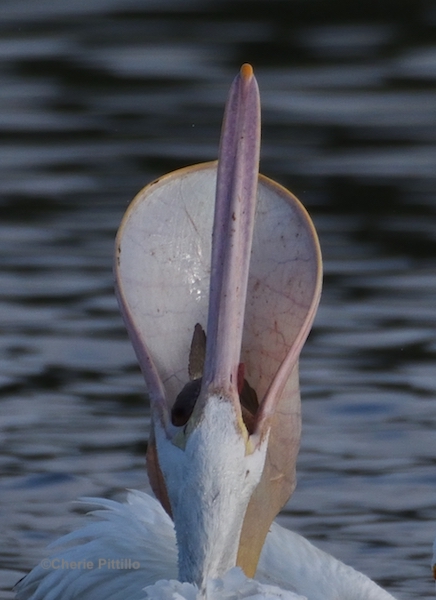
What I noticed differently from references, these pelicans raised and lowered their heads many times before the fish could be swallowed headfirst. It wasn’t a simple process of dip bill in water to catch prey, lift up head and pouch, and gulp. Sometimes, a pelican drained the scoop several times because it refilled it with water again and again to help maneuver the fish into position. That action or even the mere capture of a fish seemed to invite some other pelicans to attempt to snatch the fish away. Perhaps these blue tilapia (fish) were larger than a typical fish they could easily get down the hatch.


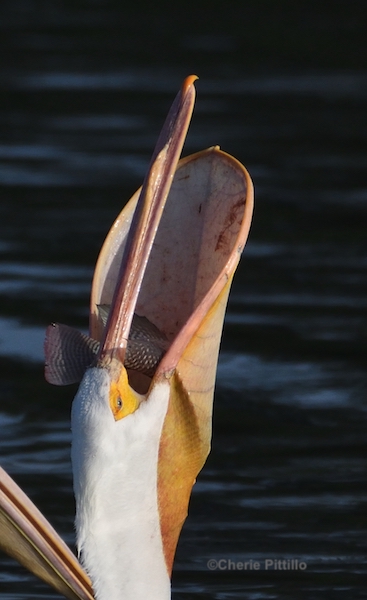
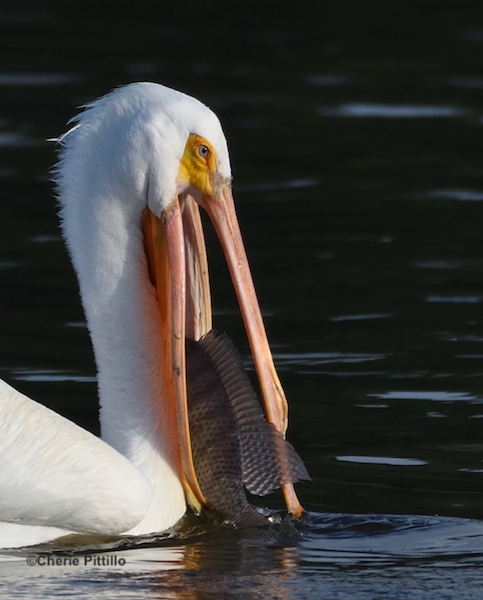
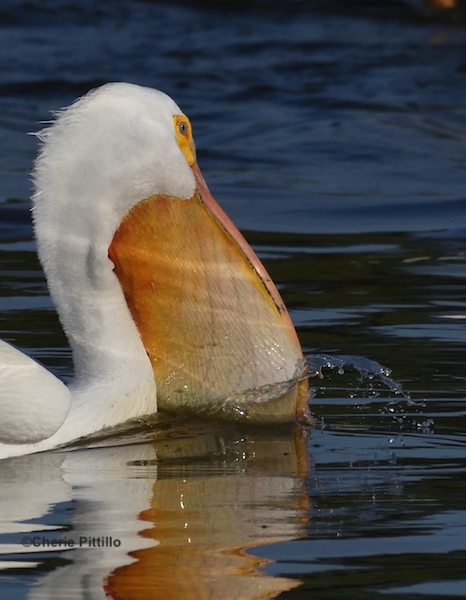


But the more I looked, the more I saw punctured pelican pouches and larger holes.

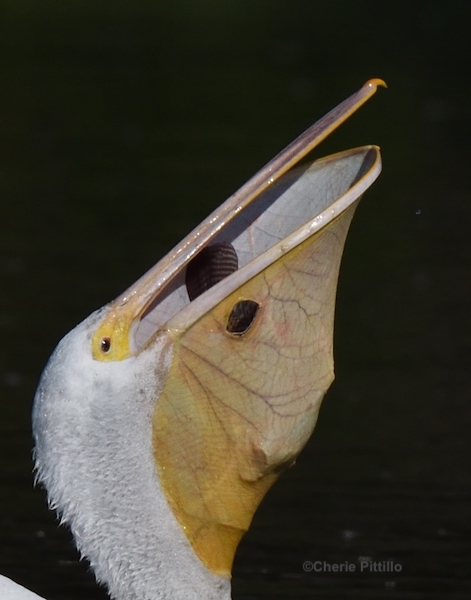


Several references mention the handicap of fish hooks tearing these amazing sacks especially in the Brown Pelican. However, the white pelicans have also regurgitated fish hooks which can cause holes. What I saw inferred damage to the pouch from fin spines while the pelican jousted the fish to devour it. I have another theory I didn’t read about; I think when other pelicans attempt to steal a fish from the capturer or to grab the same fish, that upper bill tip could also tear the pouch. Surely the pelican didn’t say, “Sack it to me, sack it to me, sack it to me!” (Apologies to Rowan and Martin’s Laugh-In tv show)



Stay tuned to Part 2 to learn about more functions of the phenomenal, pliable, pelican pouch and more feeding strategies!
DIP YOURSELF INTO NATURE TO REFRESH YOUR SOUL
DISCLAIMER: REFERENCES DO NOT ALWAYS AGREE ON INFORMATION:
Sal a Pajarear Yucatán, Bird & Reserves of the Yucatan Peninsula, A Guide to the Birds of Mexico and North Central America, The Sibley Guide to Bird Life & Behavior, Lives of North American Birds,
Knopf, F. L. and R. M. Evans (2020). American White Pelican (Pelecanus erythrorhynchos), version 1.0. In Birds of the World (A. F. Poole, Editor). Cornell Lab of Ornithology, Ithaca, NY, US
https://www.allaboutbirds.org/guide/American_White_Pelican/
http://pcwd.info/wp-content/uploads/2015/12/Pelicans.pdf
http://blog.bird-rescue.org/index.php/2018/02/vet-files-pelican-pouch-laceration/
https://sora.unm.edu/sites/default/files/journals/condor/v066n01/p0003-p0023.pdf
https://www.naturalhistorymag.com/htmlsite/editors_pick/1976_12_pick.html
https://digitalcommons.uri.edu/cgi/viewcontent.cgi?article=1716&context=oa_diss
https://birdsoftheworld.org/bow/species/amwpel/cur/introduction
Cherie Pittillo, “nature inspired,” photographer and author, explores nature everywhere she goes. She’s identified 56 bird species in her Merida, Yucatan backyard view. Her monthly column features anecdotes about birding in Merida, Yucatan and also wildlife beyond the Yucatan.
Contact: [email protected] All rights reserved, ©Cherie PittilloToggle panel: UM Content Restriction
